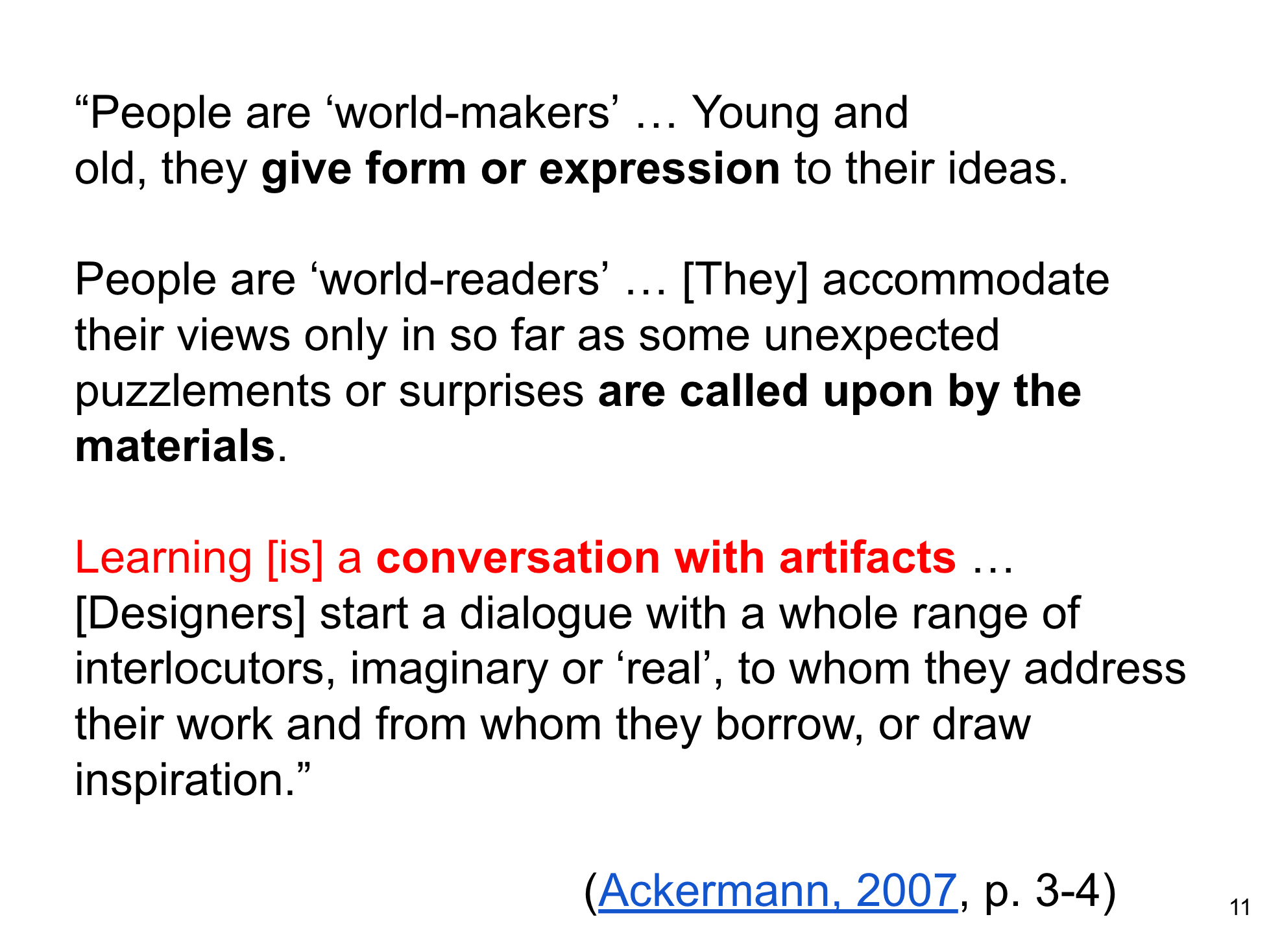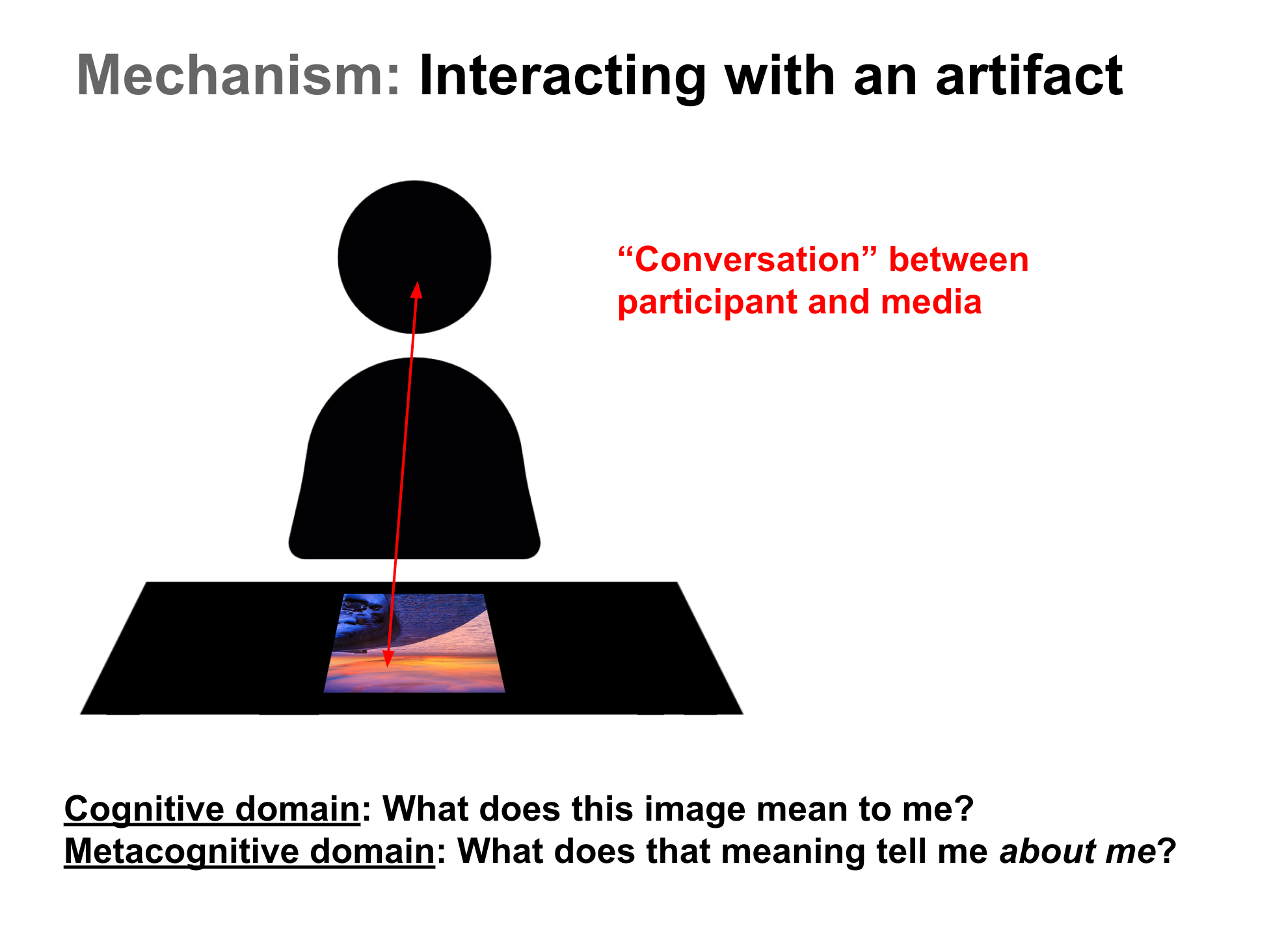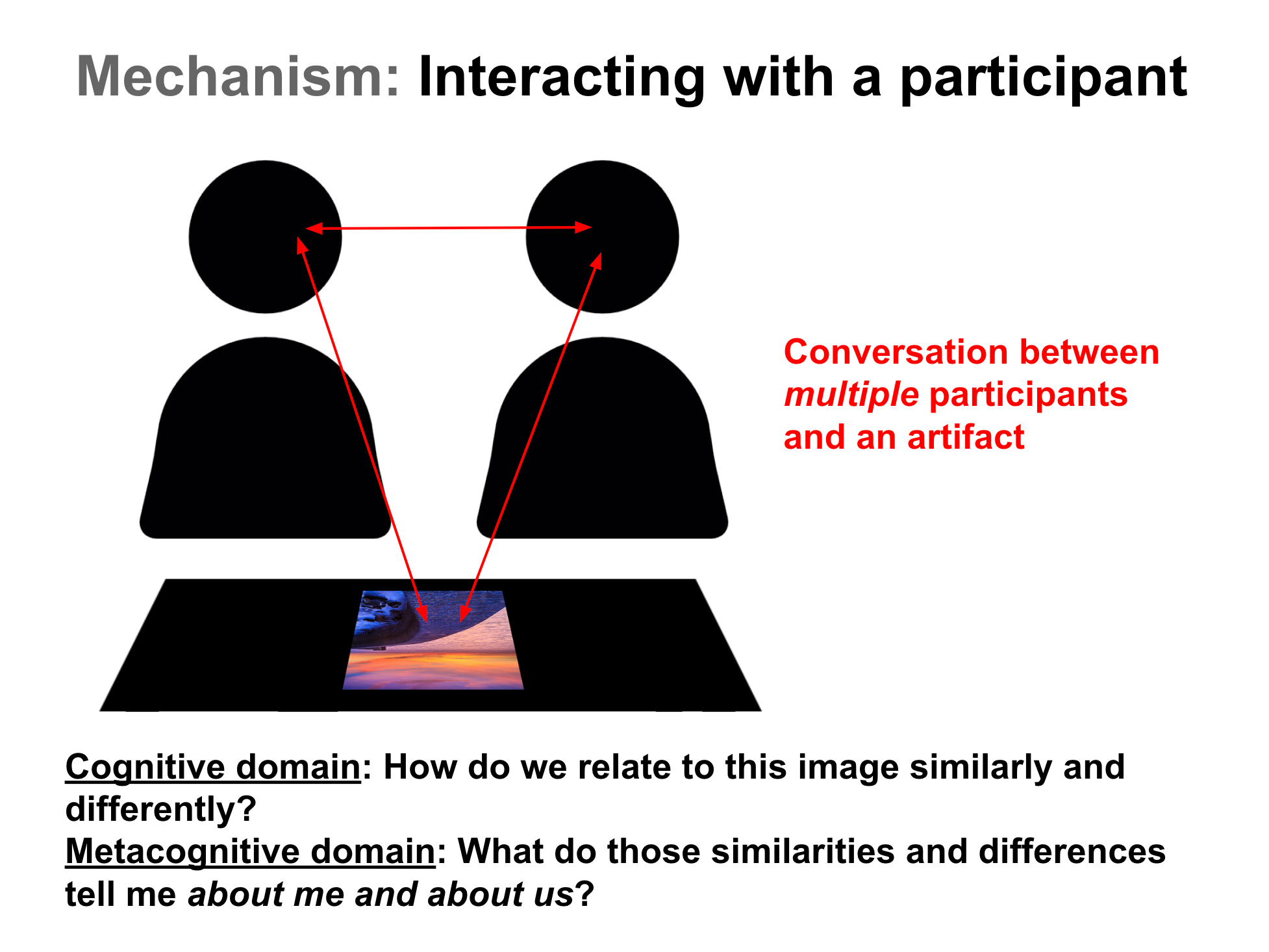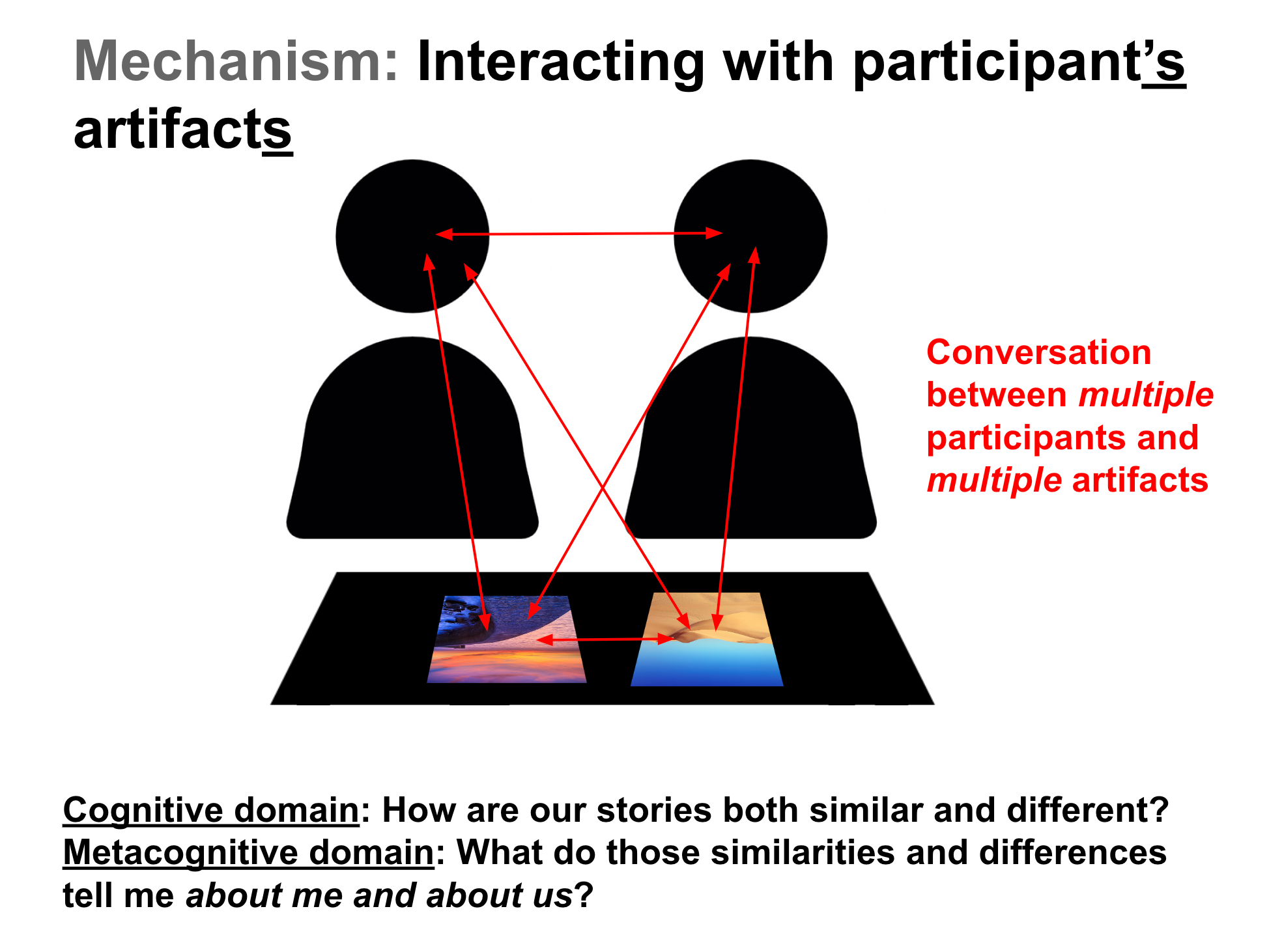Putting Learning Theories into Practice
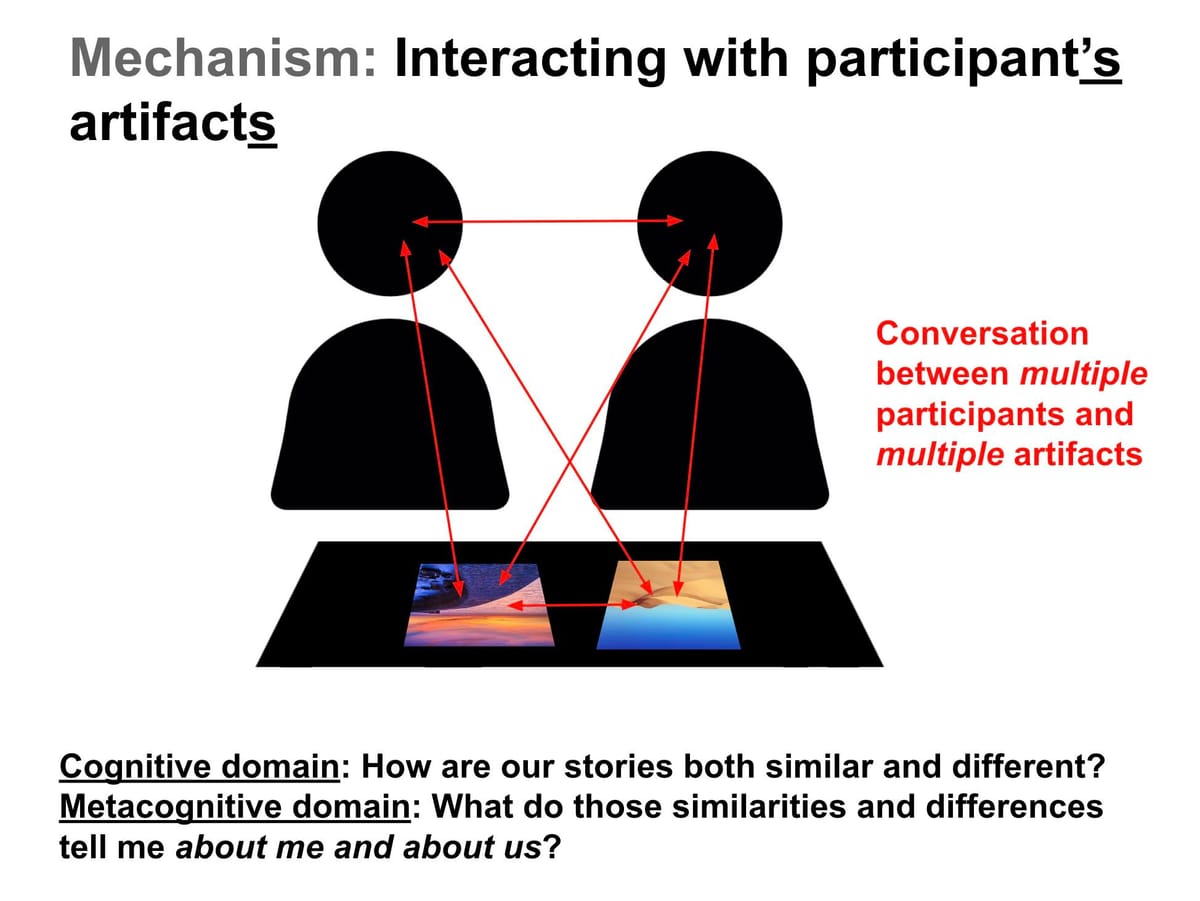
"OK, Kyle, so learning theories are great, but how do we actually use them?"
I've tried to share a few answers to this question along the way this week, some typical moves corresponding to several of the theoretical perspectives. But it's worth asking this question early and often.
My simplest answer is this: draw a picture. If you draw a picture tracing plausible learning pathways in the space you're creating, you get the chance to
- enact your understanding of the theory and its workings;
- plan learning activities with a more concrete awareness of what might be going on for your learners in the space; and
- evaluate whether the learning paths you've conceptualized are complex enough to support rich, deep learning.
On that last point: At the very least, drawing the picture can help us see when we're falling into the trap of planning a straight-up lecture with little or no interactive components. An arrow from the teacher to the student and then a little circular arrow inside the student's head is not a super compelling web of learning.
Don't get too caught up in the technical minutiae of your sketch and how each component corresponds precisely to some idea in the theory. Just try to think about what's important from the learning perspective you're seeing to be guided by, and capture that in whatever way you think makes sense.
By now you've probably figured out that the images on this post are from some sketching I did. In this case, it was for the final project in my metacognition class at TC. The quotes in the first slide are from Edith Ackermann, a student of Piaget, expounding some finer points of constructivism.
These images aren't gonna get me a job as Edward Tufte's apprentice, but hopefully they give you a sense of what I'm getting at with this advice to draw a picture.
And if you make a sketch of your next learning plan, I'd love to see it!
